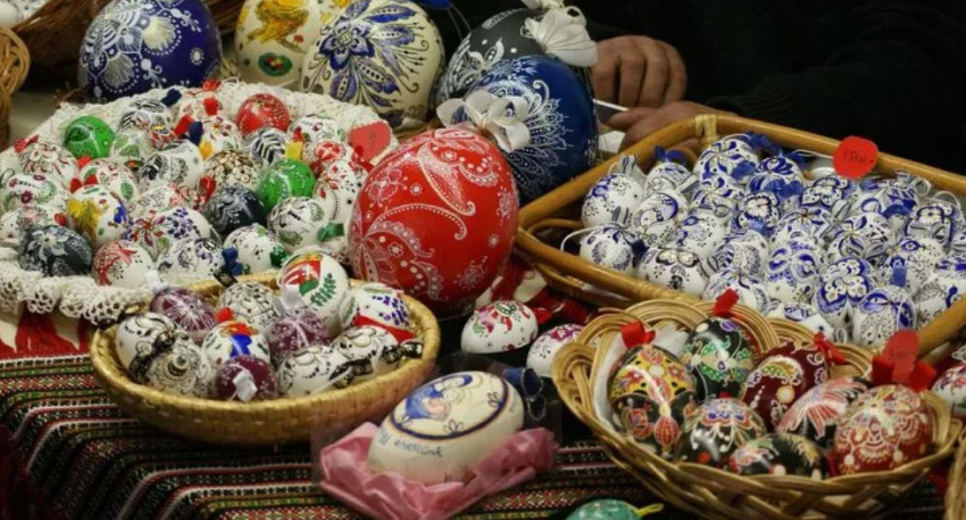
Custom

TRADITIONAL COSTUME
Dress rules prescribing clothing for age and occasion also existed in Komárom-Esztergom county, especially in the more varied women's clothing. The girls went unmarried, the brides wore buns, and the older women wore a headscarf tied in front. On the first day of major holidays, Black Sunday and Good Friday, they wore dark clothes, on the second day of the holidays and Palm Sunday, they wore white or at least light-colored clothes, with boots, and later strapped shoes.
At the beginning of the 20th century, men still widely wore - mainly the better-off farmers - the celebratory dress made of black or blue posto. It consisted of straight-cut, valor-knit, drawstring, contrasting trousers and stand-up-collar, button-down trousers, as well as a double-breasted coat with knitted buttons, turn-outs. They wore boots and a round hat.
FOLK CUSTOMS
The holidays of the calendar year have also remained with the customs, beliefs and predictions associated with them. The new clothes were bought for Christmas and Easter; the pig was fattened between Christmas and New Year; apples and grapes were reserved for Christmas. We thought that if the wine didn't last until the new year, at least it would last until Easter. Even today, feather plucking is a winter gathering, where the pluckers are offered popcorn or boiled corn, cakes and wine.
Significant days of the year: Advent is counted from the fourth Sunday before Christmas Eve. Its significant days: András, Borbála, Miklós, Luca's day (this day is characterized by an abundance of customs, predictions, and beliefs), Christmas (in the list of significant days of the year, e.g. Christmas table, Christmas crumbs, Christmas tree, Christmas greetings, nativity scene play a prominent role); St. John's Day, All Saints' Day, New Year's Eve, New Year's Day, Epiphany (Three Kings visited the houses); Paul's Day, candlelight vigil, Balázs Day, carnival (lasts from Epiphany to Ash Wednesday); Matthias Day. The period of Lent and Holy Week: Palm Sunday (consecration of lambs), Good Friday (fasting), Holy Saturday (Resurrection procession, the bells come from Rome), Easter (sprinkling, ball), Easter Tuesday (caning, whipping, sobrication, sprinkling of maidens), Gregory's Day.
Placing the May tree is a folk custom that has remained to this day. Pentecost, the day of the frozen saints (Szervác, Pongrác, Bonifác, Orbán), Medárd. We also mention the so-called autumn holidays (e.g. Simon-Judas, All Saints' Day, Day of the Dead, Martin's Day).
Farewell is still considered a big holiday in the villages today. They clean, paint the rooms, bake and cook and wait on their rural and urban relatives. There are villages where the farewell is held for two or three days.
SLOVAK TRADITIONS
Burial of a double bass in a bull-man mask. Love fortune telling in white clothes. The maypole symbolizing love and new life. Drowning the Moréna (straw doll dressed in women's clothes) in water and inviting spring. Or deep reflection on All Saints' Day in the silence of the candles. The intertwined pagan and Christian customs created unique traditions for the whole year.
You can read more details HERE!